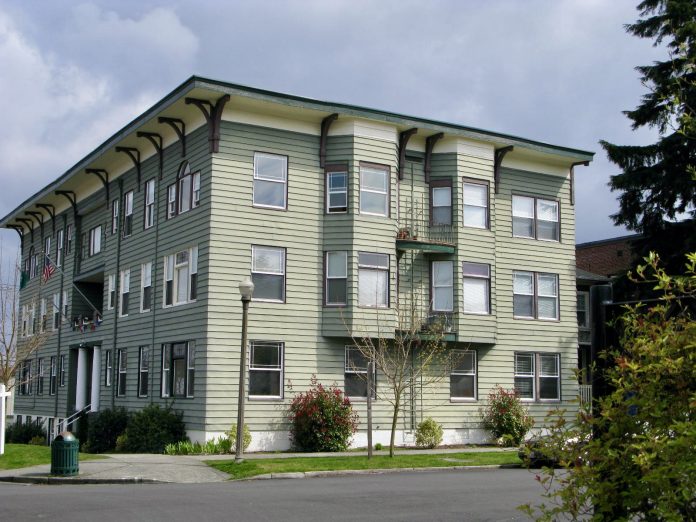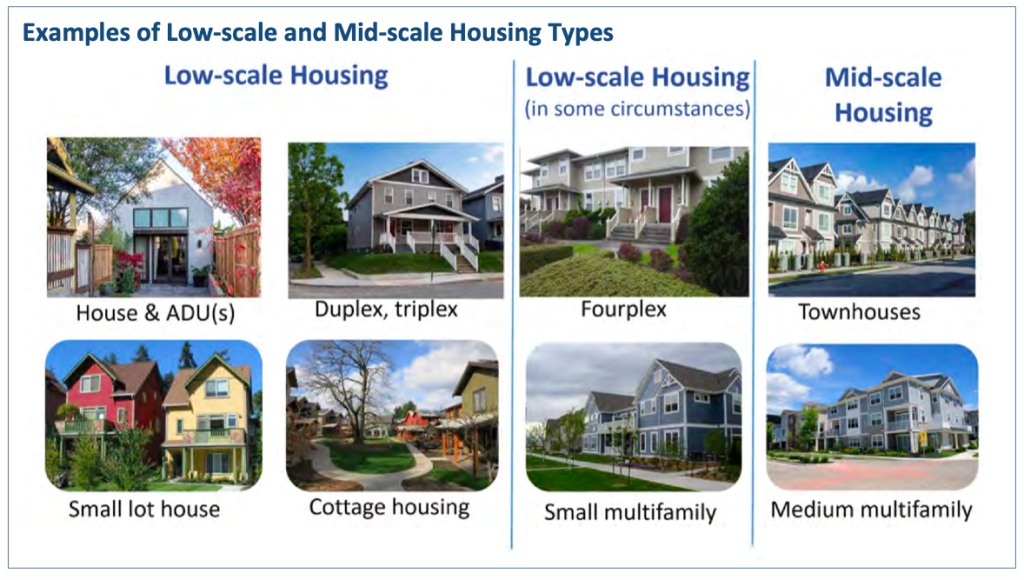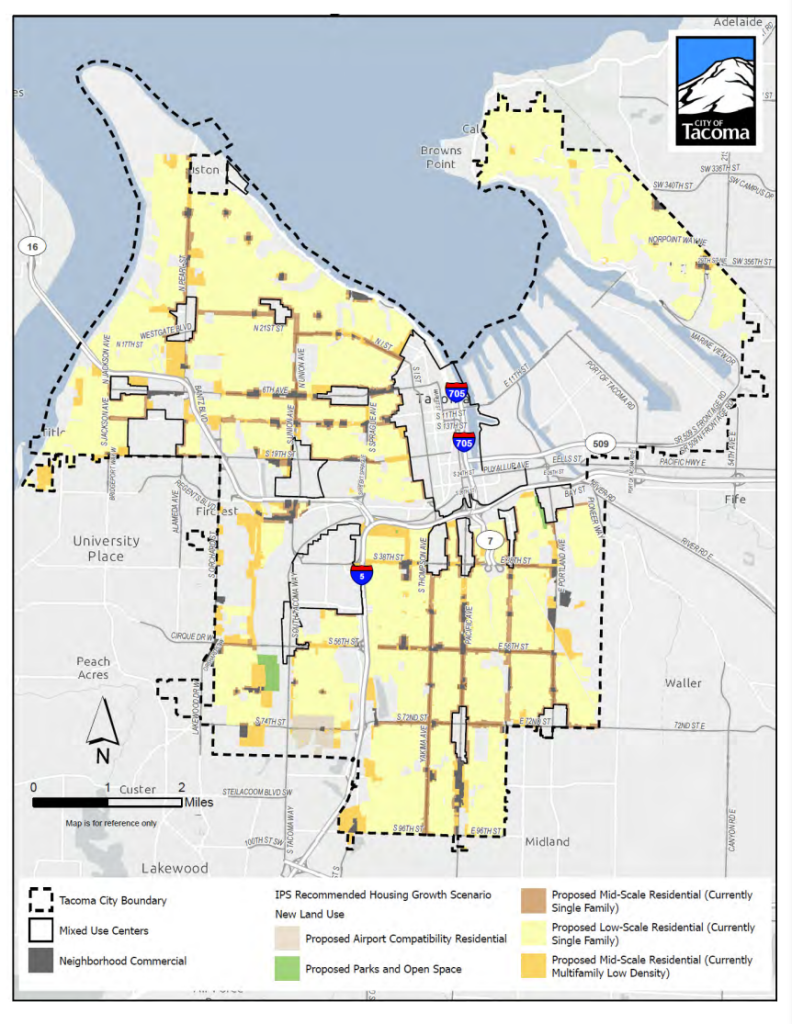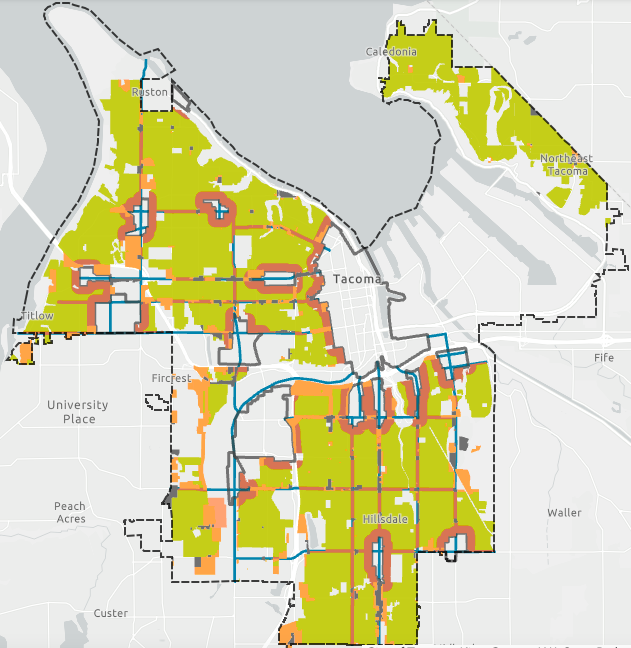
Tacoma had considered allowing low-rise apartments in 40% of residential parcels, but the latest proposal has pared that back to 17.5%.
Tacoma is in a dire housing situation. According to a WalletHub report from this summer, among 180 rental markets, Tacoma is ranked 155 in rental affordability. Additionally, data from the American Community Survey shows that about 48% of housing units in Tacoma are rentals. These two facts together indicate a simple truth: half of Tacoma housing is out of reach for many residents. When you bring in the insane prices houses are going for nowadays, normal people cannot afford to live in over half of the homes in this city. Everyone else, including your author, is left spending a significant portion of their monthly income on rent.
Homes for all?
So the City of Tacoma took steps toward addressing this housing crisis by announcing its Home in Tacoma initiative earlier this year, which aims to radically reform Tacoma’s zoning policies to create affordable housing opportunities for its residents.
In broad strokes, the housing strategy would rename single family zoning as Low-Scale residential and allow for the construction of duplexes, triplexes, cottage housing, and, in some cases, small multifamily buildings in areas previously restricted to detached single family dwellings. The new housing would need to maintain the general size and height of existing detached houses with yards in these neighborhoods.

Home in Tacoma would also rezone some of these areas as Mid-Scale residential, in an effort to further increase housing availability across the city. These Mid-Scale developments would be multi-unit and range from duplexes to moderately sized multifamily buildings, all up to three stories tall, with four stories permissible along corridors.
A common name for developments such as these is “missing middle” housing, indicating that it falls in size between detached homes and large multi-unit buildings.

For both Low-Scale and Mid-Scale zoning designations, in addition to height and scale compatibility, attention would need to be paid to scale transitions between different zoning heights and maintaining pedestrian orientation to the street with landscaping. Reuse of existing structures would be strongly emphasized as well.
But responses to the proposed zoning changes have been mixed so far.
On July 13th, the City held a public hearing regarding the Home in Tacoma plan, receiving over 500 comments. Supporters of the plan cited a growing population of houseless folks, historically discriminatory policies, and look towards a more walkable, integrated city. On the flip side, residents that oppose the strategy noted that developing along transit routes as proposed would not necessarily translate to increased accessibility or traffic reduction. They also argued that a blanket strategy for the whole city would play out differently in each neighborhood, and generally expressed the desire to maintain things as they are in the older neighborhoods. Bear in mind these comments are just a portion of the spectrum of opinions shared.
In a sense, Tacomans are torn. People want places for everyone to stay warm and dry, but people also want an intentional plan that won’t leave us with a mess to clean up in a decade.
The comments were passed along to the Infrastructure, Planning & Sustainability Committee (IPS) in late July, who reviewed and used them to update the Home in Tacoma plan over the following months. These recommendations were finalized on October 27th alongside an accompanying growth map and were formally presented to the City Council earlier this week on November 9th.
A step closer

One of the starkest features that stands out is how pared down the most recent recommendation is compared to the original Home in Tacoma plan. In the latest proposal, only 17.5% of residential parcels would be rezoned for Mid-Scale residential, down from the 25% and 40% scenarios in the original plans. If you check out the interactive ArcGIS StoryMap, you can stack these different maps on top of one another to see where exactly these changes occurred. To see the biggest differences, compare the most recent proposal to the Evolve scenario and look around the local business districts, such as Proctor, Stadium, and Lincoln. Compare both layers to really see how they stack up against one another.

Aside from changing what was rezoned, additional updates were also made to the plan. These include:
- Limiting the design of developments such that larger buildings (up to 4 stories) are directly adjacent to transit corridors;
- Ensuring that new developments are not out of scale with adjacent properties (such as a 4 story apartment in the middle of a street of single story homes);
- Increased flexibility for add-on units to existing single household homes;
- Commitment to engage locally with neighborhoods;
- Expansion of the 12-year Multifamily Tax Exemption (MFTE) to include more areas near commercial nodes and transit corridors.
Looking ahead, the first public reading of the ordinance will occur at a council meeting on November 16th. The final reading will take place on November 30th, hopefully with action from the City Council coming soon after. If all proceeds forward, Phase 2, determining the nuts and bolts of rezoning, is expected to occur in early 2022.
Public feedback sought
The City of Tacoma is taking public comments through email at cityclerk@cityoftacoma.org and City Council meetings every Tuesday at 5pm on Zoom.

Kevin Le (Guest Contributor)
Kevin Le is a Geographic Information Science (GIS) master's student at the University of Southern California. He moved to Tacoma a few years to go to UPS and has stuck around ever since. He's interested in how we can use spatial data to understand our urban landscape and build better cities for everyone.



